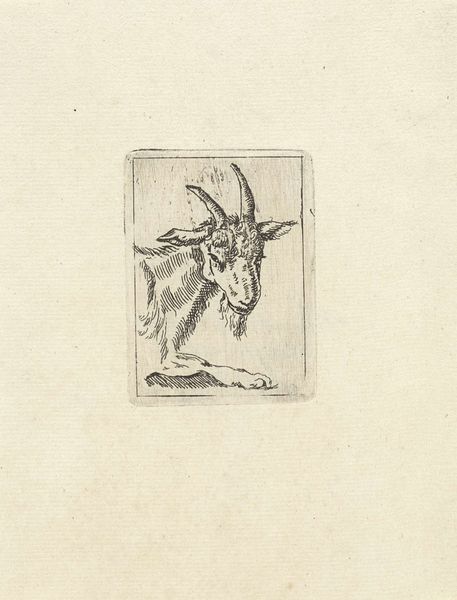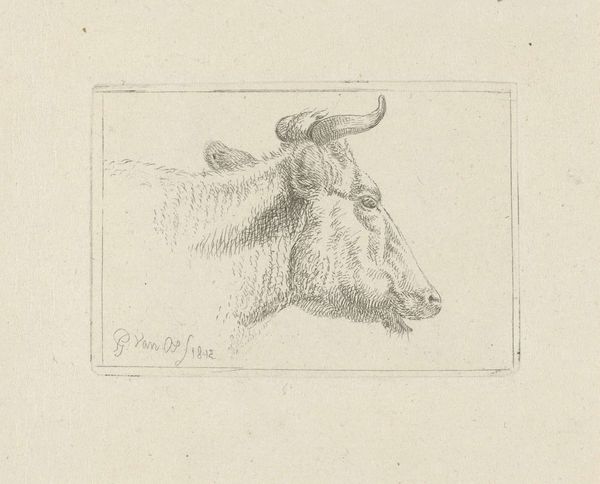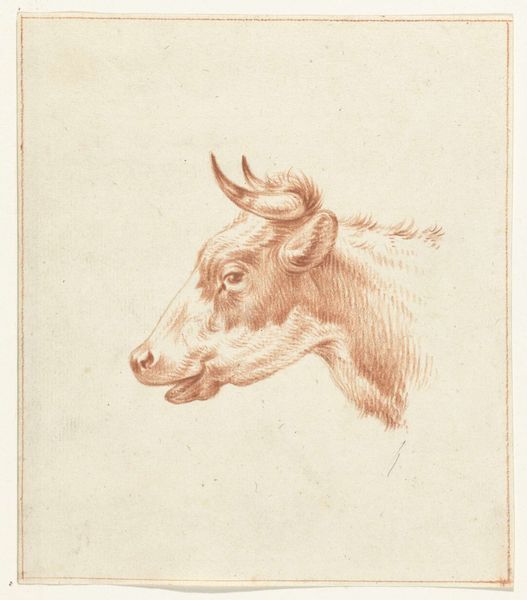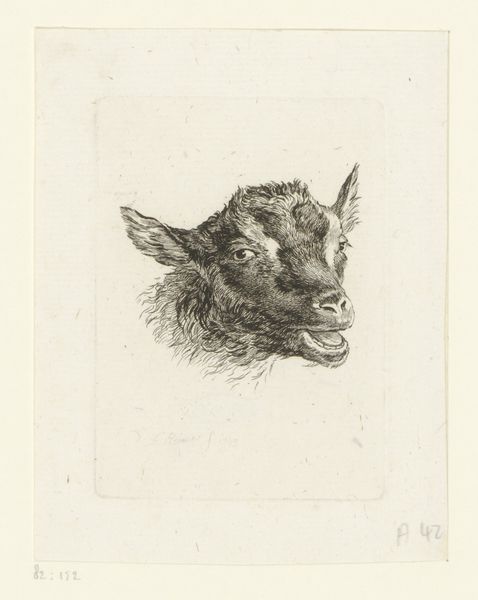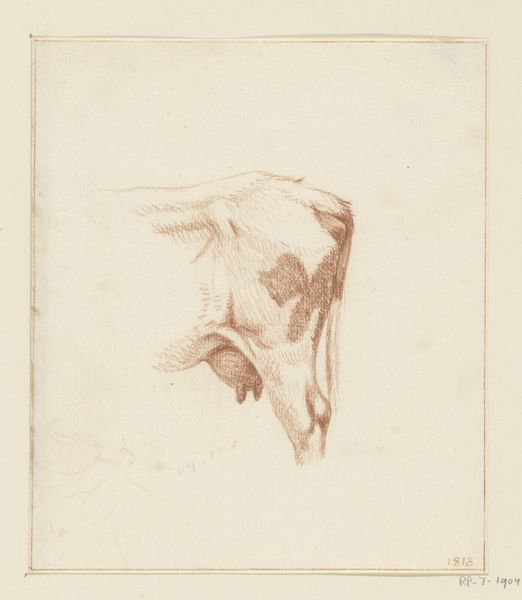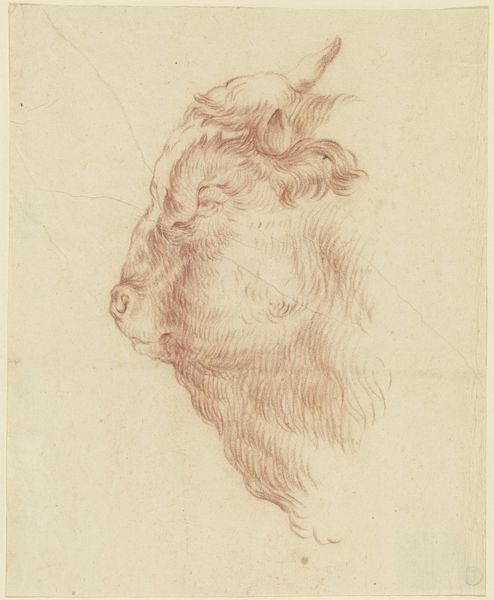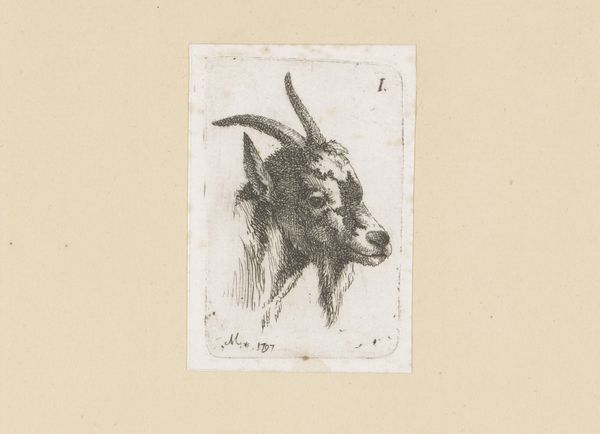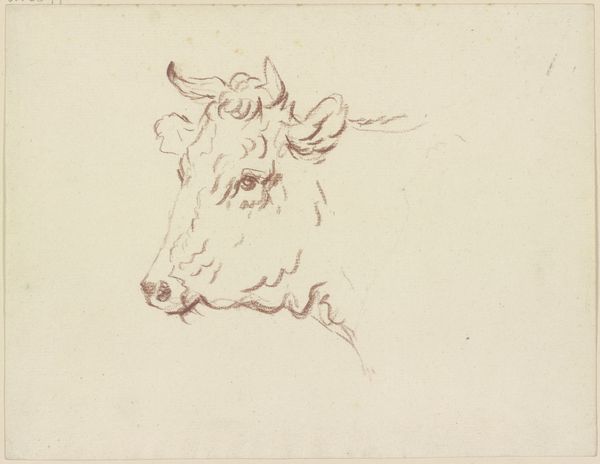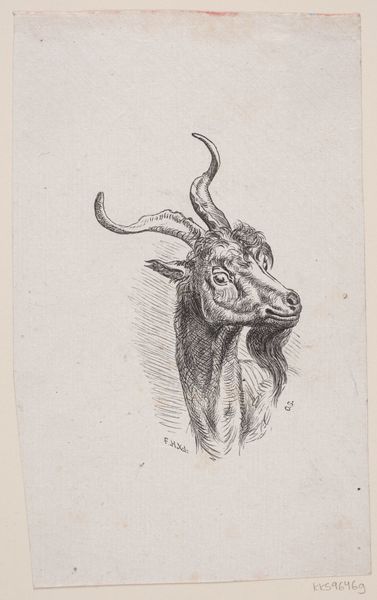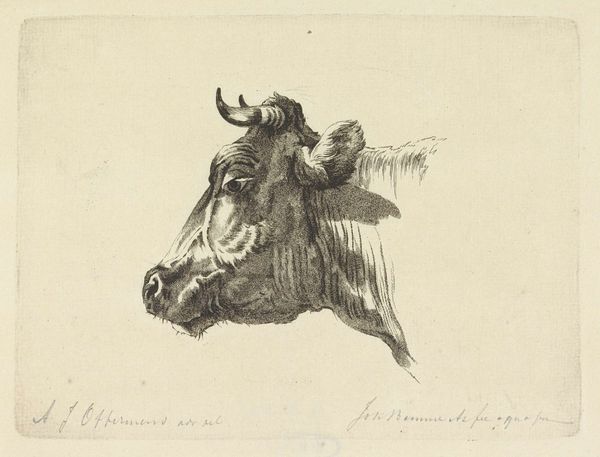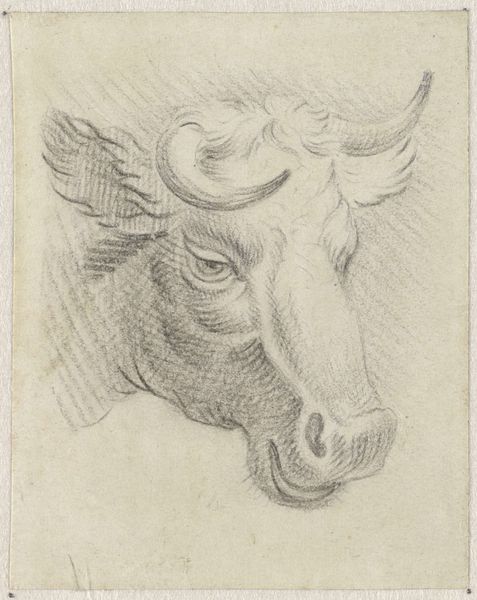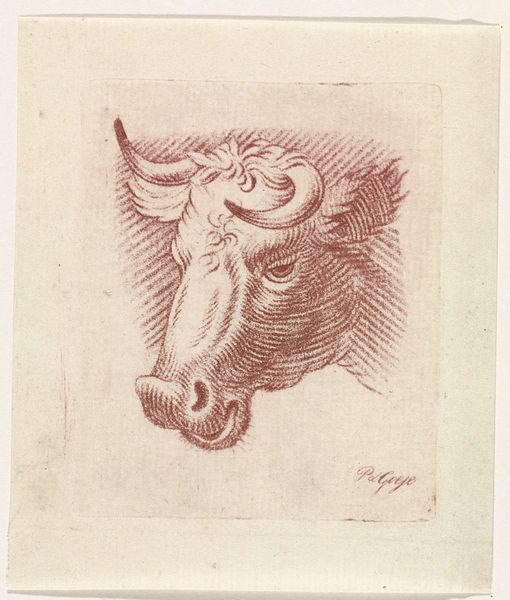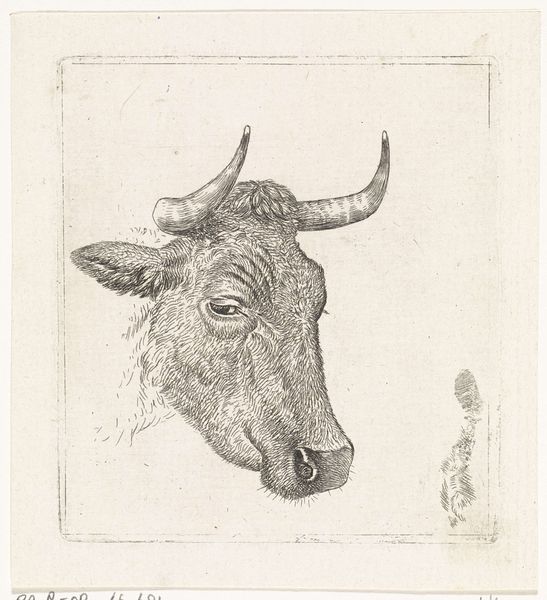
drawing, print, etching
#
portrait
#
drawing
#
animal
# print
#
etching
#
landscape
#
etching
#
realism
Dimensions: height 62 mm, width 45 mm
Copyright: Rijks Museum: Open Domain
Curator: Oh, this piece just exudes stillness. It's almost like stepping into a quiet, rural dream. Editor: Indeed. Here we have "Head and foreleg of a reclining goat," an etching by Pieter Barbiers IV, likely created sometime between 1808 and 1848. It resides here at the Rijksmuseum. Curator: The way Barbiers renders the goat's fur with those tiny, delicate lines...it’s astonishing, almost meditative. And that gaze! Straight at you, but utterly peaceful. What’s your read? Editor: Well, goats have long held symbolic weight— representing everything from fertility and abundance to stubbornness and even sacrifice. In art, a reclining animal often suggests a moment of rest, a pause in the cycle of activity. Given its proximity to agricultural landscapes, this simple study hints at deeper cultural relationships. Curator: Ah, sacrifice... a touch dramatic for this placid creature, perhaps? But I see your point about cycles and pauses. I imagine Barbiers sitting in some sun-drenched field, sketching away, feeling a kinship with his subject. A connection that transcends the mere act of representation. Editor: I wouldn’t dismiss the element of the sacred. But the etching itself, being a print, would allow this single goat to propagate across multiple impressions, its image dispersed among households, connecting them to rural and Arcadian ideals. Curator: A sort of visual meme, goat-style, if you will! A reminder of nature’s quiet beauty amidst daily life. I rather love that thought. The composition draws me down... the eye travels from its horns, down its neck, to rest with its resting foot. It really is amazing work. Editor: I agree wholeheartedly. Barbiers masterfully captures a being at peace, an archetype woven into our visual lexicon, connecting us to agrarian life. Curator: Leaving us, perhaps, to consider our own place within those enduring rhythms.
Comments
No comments
Be the first to comment and join the conversation on the ultimate creative platform.
